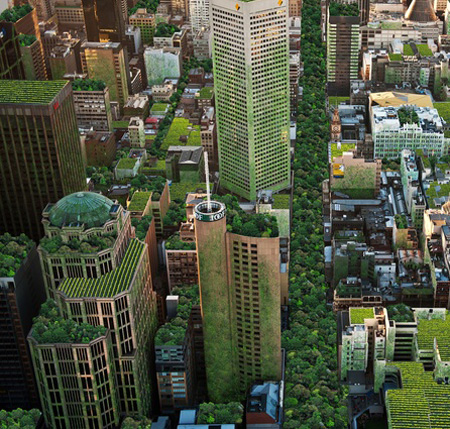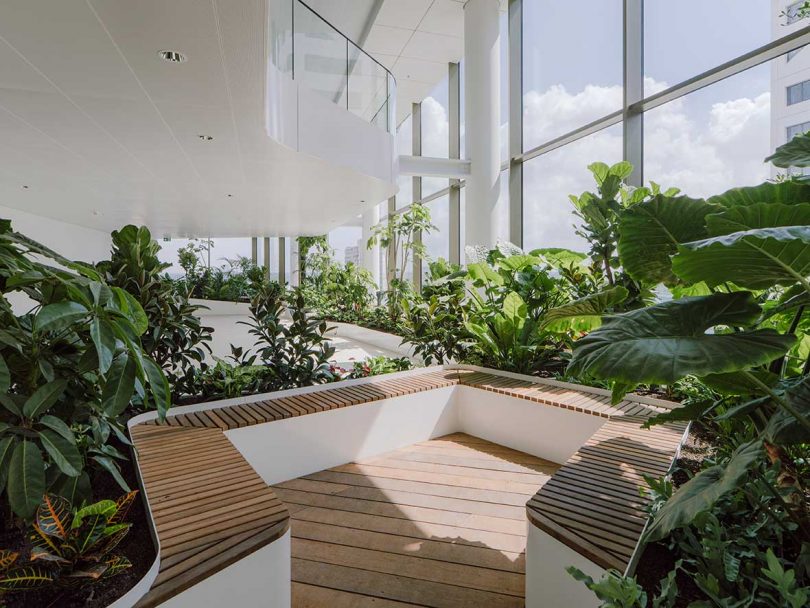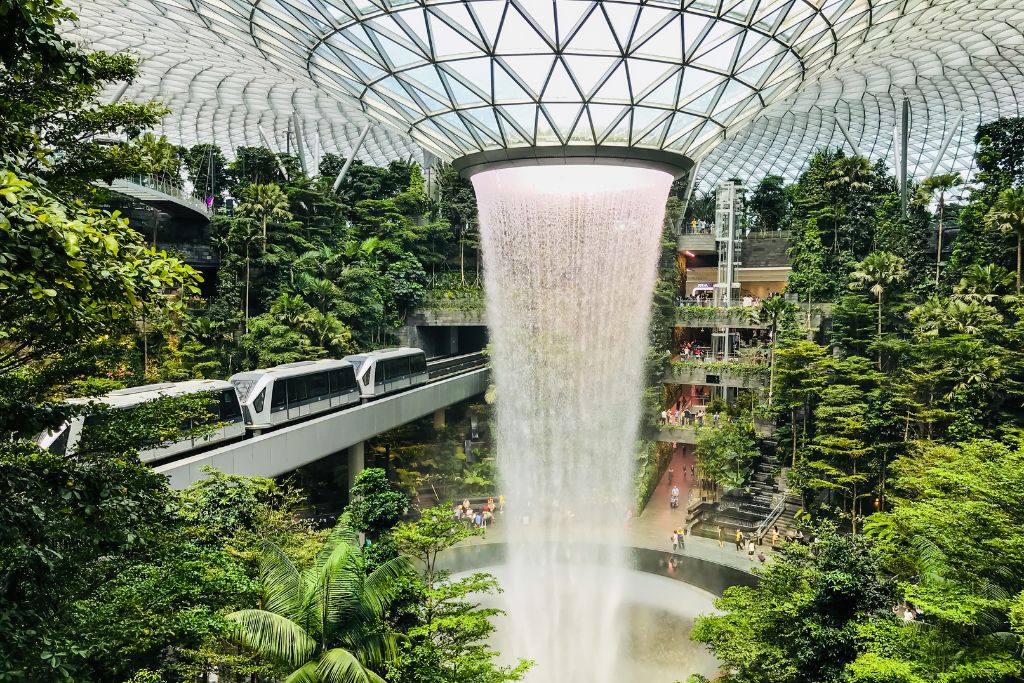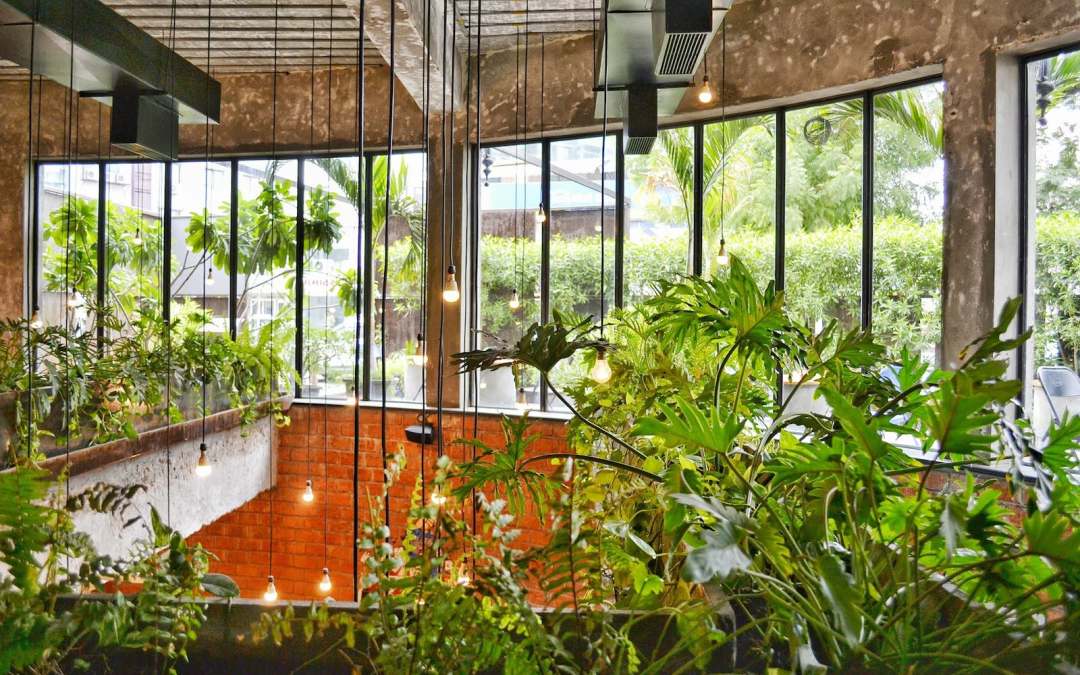Biophilic Urban Spaces as Therapeutic Landscapes.
In an increasingly urbanized world, the concept of biophilic urban spaces is gaining traction as cities strive to reconnect individuals with nature.
These meticulously designed environments incorporate natural elements into urban settings, thereby promoting both mental health and physical well-being through nature therapy and enhancing urban biodiversity.
This article examines the significance of biophilic urban spaces, highlighting their benefits—ranging from improved mental health to enhanced physical fitness—and the essential components that contribute to their effectiveness.
Additionally, it will address practical methods for integrating these spaces into urban planning, as well as the challenges that may arise in the process.
The transformative potential of converting concrete jungles into flourishing green oases through biophilic design for a healthier urban future is paramount, enhancing urban sustainability and resilience.
What Are Biophilic Urban Spaces?
.jpg_00.jpeg)
Biophilic urban spaces are defined as environments within cities that are intentionally designed to incorporate natural elements, thereby enhancing the human experience, promoting community well-being, and supporting ecological balance.
By integrating features such as greenery, water elements, and natural light, these spaces serve to not only improve the aesthetic appeal of urban settings but also strengthen the connection between humans and nature, which is essential for mental health and overall quality of life.
As urban areas continue to expand, the concept of biophilic design becomes increasingly vital in urban planning, ensuring that urban ecology, biodiversity, and habitat restoration are given priority.
Why Are Biophilic Urban Spaces Important?
Biophilic urban spaces play a crucial role in developing restorative environments that promote the psychological and physical health of urban residents, thereby fundamentally reshaping the landscape of contemporary cities.
The incorporation of natural elements within urban settings serves various important functions, including the enhancement of air quality, the reduction of noise pollution, and the provision of areas for social interaction, all of which are essential for fostering community well-being and promoting social interaction.
As urban areas confront challenges such as climate adaptation and rising population density, prioritizing the establishment and maintenance of these spaces is vital for achieving urban resilience, environmental health, and ensuring a high quality of life for all residents through climate resilience and nature-based solutions.
How Do Biophilic Urban Spaces Benefit Mental Health?
The integration of biophilic design principles within urban environments has been demonstrated to yield significant benefits for mental health by fostering tranquility, mindfulness, and enhancing the human-nature connection through nature exposure. Research in environmental psychology suggests that access to green spaces facilitates cognitive restoration, alleviating stress and anxiety while promoting emotional health and well-being through nature immersion.
As urban areas continue to develop, it is imperative to prioritize therapeutic landscapes that encourage mindfulness and immersion in nature, thereby contributing to the overall health of the community.
Studies indicate that individuals residing in areas abundant with greenery frequently report lower levels of cortisol, a hormone linked to stress. Urban environments characterized by ample green spaces have been associated with improved mood and increased productivity.
Evidence from surveys reveals that individuals who regularly participate in outdoor activities, such as walking or gardening within these biophilic spaces, report enhanced levels of happiness and decreased feelings of isolation.
In summary, the incorporation of nature into urban landscapes not only strengthens mental resilience but also cultivates a vibrant community spirit, ultimately resulting in an improved quality of life.
How Do Biophilic Urban Spaces Benefit Physical Health?
Biophilic urban spaces significantly enhance physical health by promoting active transportation and providing access to outdoor areas that facilitate exercise and recreational activities. By incorporating features such as walking paths, community gardens, and green roofs, these environments cultivate a culture of physical activity, which is essential for addressing lifestyle-related health challenges.
Research indicates that exposure to greenery and natural light in urban settings improves air quality and encourages healthier lifestyle choices, ultimately contributing to enhanced physical well-being.
These design elements not only elevate the aesthetic value of neighborhoods but also play a crucial role in improving residents’ physical health. Urban planners who prioritize biophilic principles develop inviting spaces that encourage individuals to participate in activities such as cycling, jogging, and team sports.
Access to well-maintained parks and open areas facilitates the integration of exercise into daily routines, thereby promoting cardiovascular health, stress reduction, and enhancing overall physical health.
Furthermore, the presence of fresh air and green environments has been associated with reduced levels of respiratory issues and improved mental health, underscoring the importance of biophilic urban spaces as vital components in the overall health framework of communities.
What Are the Elements of a Biophilic Urban Space?
Key elements of biophilic urban spaces encompass natural materials, vegetation, water features, and wildlife, all of which play a crucial role in enhancing the human experience, fostering a deeper connection to nature, and promoting ecological design.
These components are strategically designed to create restorative environments that not only enrich urban landscapes but also support biodiversity, ecological design, and urban agriculture.
The integration of these natural elements into urban planning can yield significant benefits for community well-being and urban resilience, effectively addressing challenges such as urban heat islands, environmental degradation, and improving air quality.
1. Natural Light and Views
Natural light and views are essential elements of biophilic urban spaces, significantly influencing the emotional well-being and productivity of individuals who inhabit these environments. By optimizing the use of windows, open spaces, and outdoor areas, urban designers can create immersive experiences that foster a connection with nature. Access to natural light has been associated with improved mental health outcomes, rendering it crucial for enhancing the quality of life in urban settings.
Research indicates that exposure to sunlight aids in regulating circadian rhythms, resulting in better sleep patterns and increased energy levels throughout the day. Environments enriched with natural light can elevate moods and alleviate symptoms of anxiety and depression. This relationship between light and health highlights the necessity of incorporating adequate daylight into both residential and commercial buildings.
Workplaces designed with abundant sunlight not only enhance employee morale but also improve focus and productivity. Ultimately, the integration of natural light in urban planning and biophilic architecture is not merely an aesthetic consideration; it is a vital strategy for fostering healthier, more contented communities, and enhancing urban livability.
2. Natural Materials
.jpg_01.jpeg)
The utilization of natural materials is essential in biophilic urban spaces, as it contributes to sustainable design practices and enhances the aesthetic quality of urban environments. Incorporating materials such as wood, stone, and other organic elements fosters a connection with nature, thereby promoting emotional well-being and facilitating environmental restoration.
These materials not only mitigate the carbon footprint associated with construction but also enhance air quality and effectively manage rainwater. By integrating features such as green roofs and living walls, urban planners can develop dynamic spaces that promote biodiversity and encourage community interaction.
The tactile qualities and natural variations of these materials can evoke positive emotions and instill a sense of calm, which is crucial in the context of bustling city life. Therefore, prioritizing natural materials in design not only advances sustainability but also enriches the human experience, rendering urban environments more livable, enjoyable, and conducive to self-care.
3. Vegetation and Greenery
Vegetation and greenery are essential components of biophilic urban spaces, enhancing urban biodiversity, supporting urban forests and green corridors, and providing numerous health benefits for residents. The integration of plants, trees, and community gardens not only beautifies urban areas but also plays a critical role in improving air quality, mitigating urban heat islands, and promoting mental well-being through immersion in nature.
These green spaces encourage social interaction, foster a sense of place attachment, and promote wellness among community members.
The presence of greenery in urban environments contributes to a sustainable ecosystem by supporting wildlife habitats and promoting pollinator activity, which is vital for food production. The psychological benefits are equally significant; research indicates that interactions with nature can substantially reduce stress levels, improve mood, and even enhance creativity.
These advantages create a more vibrant urban life, enabling residents to coexist and thrive alongside nature. The incorporation of additional green spaces and public parks can lead to improved community well-being, fostering a healthier lifestyle that acknowledges the importance of nature in our daily environments and promotes urban nature conservation.
4. Water Features
Water features, such as fountains, ponds, and streams, are integral components of biophilic urban environments that promote tranquility and enhance sensory experiences for residents. The auditory and visual elements of water not only cultivate a calming atmosphere but also contribute to cognitive restoration and improved emotional well-being.
By integrating water features into urban design, planners can create therapeutic landscapes that foster a profound connection to nature and promote mental health and well-being.
These elements not only provide moments of respite amid the hustle and bustle of city life but also serve as gathering places, encouraging social interaction and community engagement. The gentle trickle of a stream or the soft splashing of a fountain creates an inviting ambiance that stimulates conversations and fosters connections among individuals, thereby enhancing social cohesion and emotional health.
Furthermore, water features support urban biodiversity by attracting various forms of wildlife, thereby enhancing the aesthetic appeal of the space. The incorporation of such natural elements in urban settings significantly elevates the quality of life and livability, making cities more livable and harmonizing human experiences with the surrounding environment.
5. Wildlife
Incorporating wildlife into biophilic urban spaces is essential for promoting biodiversity and creating vibrant ecosystems that enhance the urban experience. By establishing biodiversity corridors and habitats, cities can support urban wildlife, thereby contributing to ecological balance, urban ecology, and environmental health.
The presence of wildlife not only enriches the urban landscape but also fosters a deeper appreciation for nature among residents, encouraging community engagement, environmental stewardship, and a strong human-nature connection.
As urban areas increasingly confront challenges such as habitat loss and climate change, the integration of nature within city planning has become imperative. By prioritizing wildlife-friendly practices, local governments can cultivate green spaces and wildlife corridors that serve as critical habitats for various species.
This approach not only helps maintain ecological integrity but also invites residents to engage in nature-based activities and educational programs, thereby strengthening community ties, promoting sustainability, and enhancing community resilience.
The presence of these natural elements can enhance mental well-being and emotional health, transforming cities into thriving ecosystems where people and wildlife coexist harmoniously rather than mere living spaces.
How Can Biophilic Urban Spaces Be Incorporated into City Design?
Incorporating biophilic urban spaces into city design necessitates a strategic approach that adheres to urban design principles while prioritizing the integration of green spaces and nature-based solutions for the benefit of residents.
By emphasizing active transportation, public parks, and accessible natural areas, urban planners can develop environments that foster community resilience, social equity, and encourage social interaction.
These design considerations not only enhance the livability of cities but also contribute significantly to the overall health benefits, stress reduction, and well-being associated with biophilic design.
1. Public Parks and Gardens
Public parks and community gardens are essential elements of biophilic urban spaces, providing residents with important outdoor venues that enhance social interaction and promote community well-being. These green areas function as critical centers for environmental education and citizen engagement, fostering a sense of community and place attachment among diverse urban populations.
By prioritizing the development of accessible public parks and outdoor recreational spaces, municipalities can enhance overall quality of life and support social sustainability.
The inclusion of these natural spaces within urban landscapes contributes to improved mental health, alleviating stress levels, and encouraging physical activity among residents. As individuals convene in these communal areas, they participate in a variety of recreational activities, ranging from leisurely walks to organized sports, which not only strengthen interpersonal relationships but also nurture a sense of belonging and social cohesion.
Public parks and gardens serve as equalizers, uniting individuals from various backgrounds and thus promoting inclusivity and mutual understanding. Through organized community events and collaborative gardening initiatives, residents not only enhance the aesthetic appeal of their neighborhoods but also forge essential partnerships, thereby enriching the urban experience and supporting participatory design.
2. Green Roofs and Walls
.jpg_10.jpeg)
Green roofs and walls represent innovative approaches within biophilic urban design that significantly enhance urban sustainability and resilience. They offer a multitude of benefits, including improved air quality, stress reduction, and a reduction in urban heat island effects.
These living structures not only contribute to biodiversity and habitat creation but also facilitate climate adaptation by effectively managing stormwater runoff and mitigating the impacts of fluctuating weather patterns. By incorporating green roofs and walls into urban planning, cities can establish restorative environments and nature integration that benefit both residents and the ecosystem.
In addition, green roofs and walls can lead to considerable reductions in energy costs by providing natural insulation, thereby decreasing the reliance on air conditioning during the warmer months and heating in winter, while enhancing ecological sustainability.
Their aesthetic appeal has the potential to transform stark urban landscapes into vibrant, lush environments that enhance mental well-being and strengthen community connections. As green spaces are integrated into the urban fabric, they increase property values and attract tourism, while also functioning as essential strategies for urban resilience and ecological sustainability against flooding and extreme weather events.
Ultimately, the implementation of these green infrastructures can foster a healthier, more dynamic urban life and contribute to urban nature conservation.
3. Indoor Green Spaces
Indoor green spaces, including atriums, vertical gardens, and living walls, play a significant role in enhancing wellness architecture by fostering a connection to nature within built environments. The deliberate integration of natural light and greenery in indoor settings contributes to the creation of restorative environments that positively impact mental health, psychological benefits, and increase productivity among occupants.
As urban residents seek respite from the demands of city life, indoor green spaces provide a sanctuary that promotes tranquility, mindfulness, and well-being.
These features not only enhance the visual aesthetics of a space, but they also serve to effectively filter indoor air pollutants, thereby improving air quality and contributing to overall health. Research indicates that environments enriched with plants can reduce stress, enhance mood, elevate cognitive function, and promote nature therapy, enabling individuals to work more efficiently and creatively.
Furthermore, the presence of greenery can cultivate a sense of community and social interaction, encouraging collaboration among coworkers or residents. In a rapidly urbanizing world, indoor green spaces are an essential component of urban design, signifying a shift towards prioritizing the mental and emotional health of city inhabitants and enhancing their quality of life.
4. Street Trees and Landscaping
Street trees and landscaping are critical elements of biophilic urban spaces, contributing to enhanced visual aesthetics, improved air quality, and overall health benefits for urban residents. The strategic placement of trees and green features in urban areas not only beautifies streetscapes but also provides shade, mitigates noise pollution, and promotes biodiversity, thereby creating a more livable urban environment and supporting urban ecology.
These attributes strengthen the connection between humans and nature, fostering community resilience, urban livability, and a sense of belonging.
Incorporating green spaces into urban planning can significantly reduce stress levels and promote mental well-being by providing residents with opportunities to unwind and engage with nature. The presence of street trees also plays a vital role in regulating temperatures, which can subsequently lower energy costs associated with heating and cooling buildings while supporting urban sustainability.
Furthermore, urban landscaping supports wildlife habitats, benefiting various species, contributing to local ecosystems, and promoting biodiversity enhancement.
As cities continue to grow, a commitment to increasing vegetation will not only enrich urban aesthetics but also enhance the quality of life and cultural identity, making these areas more appealing and sustainable for both current and future generations.
What Are the Challenges of Creating Biophilic Urban Spaces?
The creation of biophilic urban spaces entails various challenges, particularly with regard to limited spatial availability and budgetary constraints, which often impede the effective incorporation of natural elements into urban design and landscape architecture.
Furthermore, addressing social inequalities in access to green spaces presents significant obstacles, as marginalized communities may lack the necessary resources and opportunities to benefit from biophilic initiatives and nature exposure.
Overcoming these challenges necessitates innovative solutions and a strong commitment from urban planners, policymakers, and community stakeholders to ensure equitable access to restorative environments and nature immersion for all residents.
1. Limited Space and Budget
Limited space and budget constraints present significant challenges in the development of biophilic urban spaces, often resulting in compromises regarding design and quality. Urban planners must navigate the complexities of competing land uses and financial limitations, which necessitates the adoption of creative solutions that prioritize the integration of natural elements, urban agriculture, and green infrastructure within urban environments.
This challenge requires innovative thinking and collaboration among various stakeholders to maximize the potential of available space, resources, and participatory design.
To effectively address these challenges, urban planners may consider strategies such as:
- Vertical gardens, which leverage vertical space to introduce greenery without necessitating extensive ground area and increase urban biodiversity.
- Modular designs that can be implemented, allowing for flexible arrangements that can be adapted over time as budgets permit further enhancements of green community spaces.
- Engaging the local community in park revitalization efforts, which not only cultivates a sense of ownership but also fosters social interaction and ecological stewardship, thereby minimizing expenditures.
- Forming partnerships with private entities to open new funding avenues, ensuring that even with limited resources, the principles of biophilic design and nature integration can be successfully integrated into urban settings.
2. Maintenance and Management
Effective maintenance and management are essential for the sustainability and longevity of biophilic urban spaces, ensuring that these environments continue to thrive and provide ongoing psychological benefits and emotional health improvements to residents.
Regular upkeep, community engagement, and appropriate resource allocation are critical for preserving the health of plants, wildlife, and infrastructure within these restorative environments. Addressing management challenges is vital for fostering community ownership and ensuring that biophilic principles remain central to urban design and urban ecology.
To achieve these objectives, cities frequently implement best practices such as establishing maintenance schedules, utilizing native flora to enhance biodiversity and urban forests, and promoting volunteer programs that enable residents to actively participate in their local green areas.
However, challenges such as funding constraints and varying levels of community involvement may impede effective management and urban regeneration. Overcoming these obstacles necessitates a collaborative approach that emphasizes education and awareness of the ecological and social benefits of biophilic urban spaces, including enhanced urban sustainability and community resilience, thereby securing their status as vital components of urban life.
3. Addressing Social Inequalities
.jpg_11.jpeg)
Addressing social inequalities in access to biophilic urban spaces presents a complex challenge that necessitates careful urban planning and active community engagement to promote restorative justice and social cohesion. It is essential to ensure that all residents, particularly those from marginalized communities, have equitable access to nature and restorative environments, contributing to cultural identity and human experience.
This approach is crucial for fostering social sustainability, quality of life, and urban livability. Urban planners must prioritize spatial equity by incorporating diverse community voices into the design process and promoting inclusive access to green spaces and public parks.
This multifaceted issue extends beyond mere physical accessibility to include socio-economic factors that may restrict engagement with urban nature and landscape architecture. By recognizing and addressing these challenges, cities can implement effective strategies such as community-led initiatives, mobile green spaces, and environmental education programs to enhance mindfulness and ecological design.
Furthermore, cultivating partnerships between local organizations and government agencies can significantly elevate the emphasis on social equity and participatory design within urban design.
The vitality of biophilic spaces can be considerably enhanced when community members are actively involved in their creation, management, and maintenance, promoting place attachment and connectedness to nature. This collaborative approach ensures that these areas cater to the diverse needs of the population while fostering a deeper connection to nature and enhancing ecological sustainability.
Frequently Asked Questions
What are biophilic urban spaces?
Biophilic urban spaces are designed and built environments that incorporate elements of nature, such as plants, water, and natural light, into urban settings, enhancing urban nature and livability. These spaces aim to enhance people’s connection with nature, improve their well-being, and promote nature immersion.
What makes biophilic urban spaces therapeutic landscapes?
Biophilic urban spaces are considered therapeutic landscapes because they have been shown to have positive effects on people’s mental health and physical health. These spaces can reduce stress, improve mood, and promote relaxation through nature therapy, making them an important component of urban planning and design.
How do biophilic urban spaces benefit people’s health?
Biophilic urban spaces promote physical activity and encourage people to spend more time outdoors in outdoor spaces, which can improve overall health and reduce the risk of chronic diseases. These spaces also have a calming effect on the mind, reducing stress and anxiety, thereby supporting mental health and wellness.
What are some examples of biophilic elements in urban spaces?
Some common biophilic elements found in urban spaces include green roofs, living walls, water features, and natural lighting, all contributing to improved air quality and visual access. These elements can be incorporated into buildings, parks, and public spaces to bring a sense of nature into the urban environment, enhancing habitat creation and urban wildlife.
How can biophilic urban spaces be incorporated into cities?
Biophilic urban spaces can be incorporated into cities through strategic urban planning and design, focusing on sustainable cities and green infrastructure. This can include creating green spaces and parks, incorporating natural elements into building design, and promoting walkable and bikeable communities for improved ecological footprint and resilience.
What are the benefits of including biophilic urban spaces in cities?
Along with improving people’s health and well-being, biophilic urban spaces can also have economic and environmental benefits, such as landscape interventions and urban agriculture. These spaces can attract tourism, increase property values, and reduce air and noise pollution in cities, while supporting urban renewal and engaging spaces.

I’m Bruno, an architect with a deep passion for Biophilic Design in Urban Architecture. Throughout my career, I’ve focused on integrating natural elements into urban planning, and I created this site to share my insights and foster a deeper understanding of how biophilic principles can significantly enhance urban living. Dedicated to sustainable development, I continually explore innovative design solutions that promote both environmental and human well-being in city landscapes.














Publicar comentário